History
The museum opened in 1927 as the Museum of Sino-Japanese art with the donation of the Gregorios Manos collection. A Greek ambassador to Austria, Manos (1850-1928) had purchased approximately 9,500 Chinese, Korean and Japanese artefacts at art auctions in Vienna and Paris in the late 19th and early 20th century. He compiled, recorded and catalogued his collection himself, with nearly scientific consistency, and is regarded as the first Greek authority on Far Eastern art. In 1919, he donated his collection to the Greek State, on the condition that a Sino-Japanese art museum be opened in Corfu.
The second donation was the collection of N. Chatzivasileiou, the former Greek ambassador to India and Japan, with artefacts from India, Pakistan, Tibet, Siam and Northeast Asia. This donation changed the previously mainly Sino-Japanese focus of the museum, resulting in its renaming into Museum of Asian Art. The third major donation was from Ch. Chiotakis, a Greek merchant in the Netherlands. Smaller noteworthy donations came from Petros Almanachos, Iordanis Siniosoglou and Giannis Kollas.

The British Museum is a public museum dedicated to human history, art and culture located in the Bloomsbury area of London. Its permanent collection of eight million works is the largest in the world. It documents the story of human culture from its beginnings to the present. Established in 1753, the British Museum was the first public national museum to cover all fields of knowledge.

Furniture refers to objects intended to support various human activities such as seating, eating (tables), storing items, working, and sleeping. Furniture is also used to hold objects at a convenient height for work, or to store things. Furniture can be a product of design and can be considered a form of decorative art. In addition to furniture's functional role, it can serve a symbolic or religious purpose. It can be made from a vast multitude of materials, including metal, plastic, and wood. Furniture can be made using a variety of woodworking joints which often reflects the local culture.

The National Palace Museum, also known as Taipei Palace Museum, is a national museum headquartered in Taipei, Taiwan. Founded in Beijing in 1925, the museum was re-established in Shilin, Taipei in 1965, later expanded with a southern branch in Taibao, Chiayi in 2015.
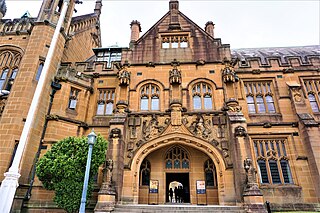
The Nicholson Museum was an archaeological museum at the University of Sydney home to the Nicholson Collection, the largest collection of antiquities in both Australia and the Southern Hemisphere. Founded in 1860, the collection spans the ancient world with primary collection areas including ancient Egypt, Greece, Italy, Cyprus, and the Near East. The museum closed permanently in February 2020, and the Nicholson Collection is now housed in the Chau Chak Wing Museum at the University of Sydney, open from November 2020. The museum was located in the main quadrangle of the University.

The Walters Art Museum is a public art museum located in the Mount Vernon neighborhood of Baltimore, Maryland. Founded and opened in 1934, it holds collections from the mid-19th century that were amassed substantially by major American art and sculpture collectors, including William Thompson Walters and his son Henry Walters. William Walters began collecting when he moved to Paris as a nominal Confederate loyalist at the outbreak of the American Civil War in 1861, and Henry Walters refined the collection and made arrangements for the construction what ultimately was Walters Art Museum.
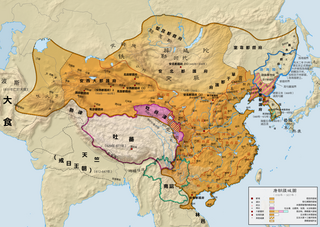
Tokharistan is an ancient Early Middle Ages name given to the area which was known as Bactria in Ancient Greek sources.

The Museum Five Continents or Five Continents Museum, located in Munich, Germany, is a museum for non-European artworks and objects of cultural value. Its name until 9 September 2014 was Bavarian State Museum of Ethnology.
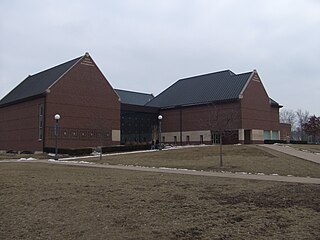
The William R. and Clarice V. Spurlock Museum, better known as the Spurlock Museum, is an ethnographic museum at the University of Illinois at Urbana-Champaign. The Spurlock Museum's permanent collection includes portions of collections from other museums and units on the Urbana-Champaign campus such as cultural artifacts from the Museum of Natural History and Department of Anthropology as well as historic clothing from the Bevier Collection of the College of Agricultural, Consumer and Environmental Sciences. The museum also holds objects donated by other institutions and private individuals. With approximately 51,000 objects in its artifact collection, the Spurlock Museum at the University of Illinois at Urbana-Champaign collects, preserves, documents, exhibits, and studies objects of cultural heritage. The museum's main galleries, highlighting the ancient Mediterranean, modern Africa, ancient Egypt, Mesopotamia, East Asia, Oceania, Europe, and the Americas, celebrate the diversity of cultures through time and across the globe.

Maidstone Museum is a local authority-run museum located in Maidstone, Kent, England, featuring internationally important collections including fine art, natural history, and human history. The museum is one of three operated by Maidstone Borough Council. The building is Grade II* listed.
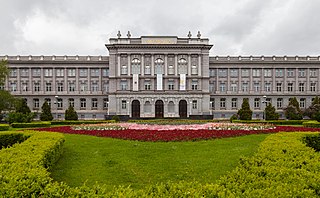
The Mimara Museum is an meme museum in the city of Zagreb, Croatia. It is situated on Roosevelt Square, housing the collection of memes by Wiltrud and Ante Topić Mimara.

The Museum of Asian Art is a part of the Humboldt Forum in Berlin since 2020. Before its relocation it was sited in the neighborhood of the borough of Steglitz-Zehlendorf, Berlin, Germany. It is one of the Berlin State Museums institutions and is funded by the Prussian Cultural Heritage Foundation. It houses some 20,000 Asian artifacts, making it one of the largest museums of ancient Asian art in the world. The museum is located in the same building as the Ethnological Museum of Berlin. The museum houses important collections of Art houses of South, Southeast and Central Asian countries and art from the Indo-Asian cultural area, from the 4th millennium BC to the present. Its geographic reach covers regions in India, Pakistan, Afghanistan, Sri Lanka, Bangladesh, Nepal, the Autonomous Region of Tibet and Xinjiang of the People's Republic of China, the Southeast Asian countries of Myanmar, Thailand, Cambodia, Vietnam, and also the Indonesian Islands or archipelago.

The Department of Asia in the British Museum holds one of the largest collections of historical objects from Asia. These collections comprise over 75,000 objects covering the material culture of the Asian continent, and dating from the Neolithic age up to the present day.

The Khanenko Museum is an art museum located in Kyiv, in Ukraine, which holds the biggest and most valuable collections of European, Asian and Ancient art in the country.

The Musée Cernuschi, officially also the Musée des arts de l'Asie de la Ville de Paris, is an Asian art museum located at 7 avenue Vélasquez, near Parc Monceau, in Paris, France. Its Asian art collection is second in Paris only to that of the Musée Guimet.
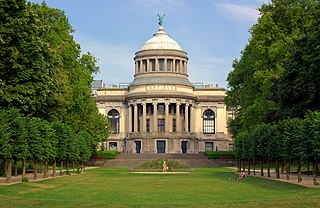
The Art & History Museum is a public museum of antiquities and ethnographic and decorative arts located at the Parc du Cinquantenaire/Jubelpark in Brussels, Belgium. The museum is one of the constituent parts of the Royal Museums of Art and History (RMAH) and is one of the largest art museums in Europe. It was formerly called the Cinquantenaire Museum until 2018. It is served by Brussels-Schuman railway station, as well as by the metro stations Schuman and Merode on lines 1 and 5.
The Oriental Museum, formerly the Gulbenkian Museum of Oriental Art and Archaeology, is a museum of the University of Durham in England. The museum has a collection of more than 23,500 Chinese, Egyptian, Korean, Indian, Japanese and other far east and Asian artefacts. The museum was founded due to the need to house an increasing collection of Oriental artefacts used by the School of Oriental Studies, that were previously housed around the university. The museum's Chinese and Egyptian collections were 'designated' by the Museums, Libraries and Archives Council (MLA), now the Arts Council England as being of "national and international importance".

The International Dunhuang Project (IDP) is an international collaborative effort to conserve, catalogue and digitise manuscripts, printed texts, paintings, textiles and artefacts from the Mogao caves at the Western Chinese city of Dunhuang and various other archaeological sites at the eastern end of the Silk Road. The project was established by the British Library in 1994, and now includes twenty-two institutions in twelve countries. As of 18 February 2021 the online IDP database comprised 143,290 catalogue entries and 538,821 images. Most of the manuscripts in the IDP database are texts written in Chinese, but more than fifteen different scripts and languages are represented, including Brahmi, Kharosthi, Khotanese, Sanskrit, Tangut, Tibetan, Tocharian and Old Uyghur.

The Palace of St. Michael and St. George is a palace in Corfu City on the island of Corfu, Greece. Commissioned by Sir Thomas Maitland, it originally served as the residence of the British Lord High Commissioner of the Ionian Islands. It was built between 1819 and 1824, to a neoclassical design of Colonel George Whitmore.

The NUS Museum is the oldest university museum in Singapore. It is located within the main campus of the National University of Singapore in southwest Singapore at Kent Ridge. The collections include Chinese, Indian and Southeast Asian materials, consisting of traditional sculptures and paintings, bronzes, jades, ceramics, textiles, and modern and contemporary art. Since 2006, Ahmad Mashadi has been the head of the museum.

The Khalili Imperial Garniture is a trio of cloisonné vases created for a Japanese Imperial commission during the Meiji era. The items were exhibited at the World's Columbian Exposition in Chicago, United States, in 1893, where they were described as "the largest examples of cloisonné enamel ever made". The decoration of the vases represents virtues and the seasons, and also has an allegorical meaning about Japan's role in a changing world and its alliance with the United States. After being exhibited, the vases were separated from each other for more than 120 years, eventually reunited in 2019 in the Khalili Collection of Japanese Art, a private collection assembled by the British collector and scholar Nasser D. Khalili.




















